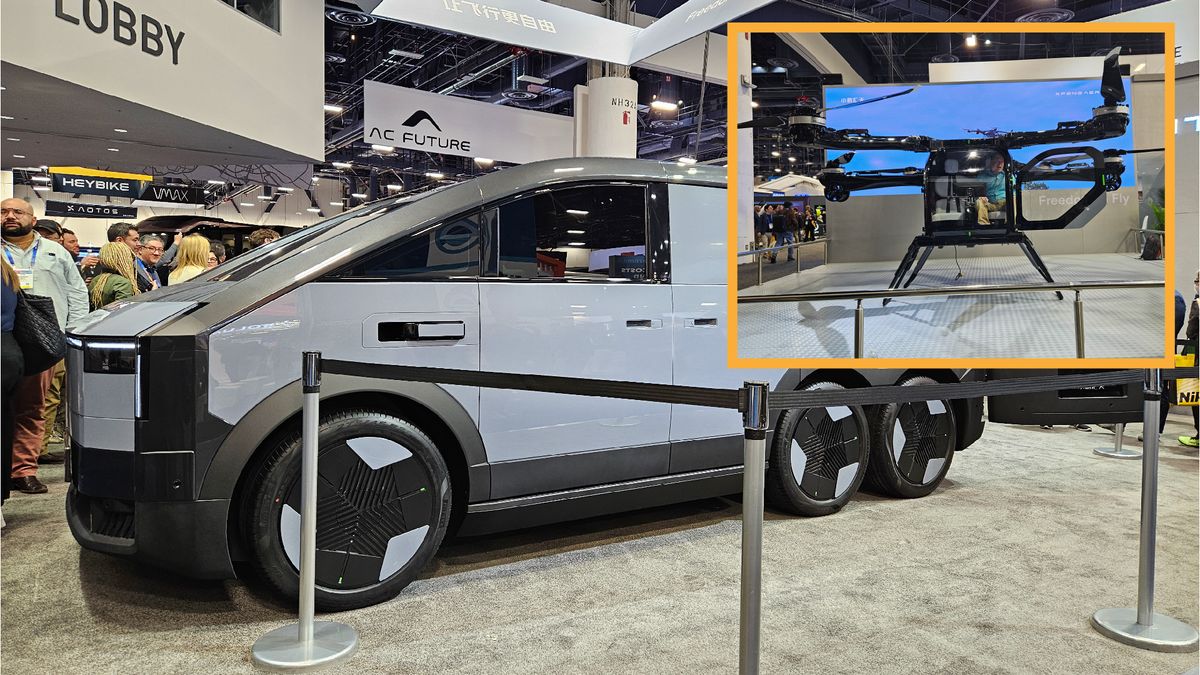LAS VEGAS — Engineers in China have unveiled a unique kind of flying car that can be bundled into a land vehicle that looks like Tesla’s controversial Cybertruck for transport — effectively turning it into a mobile aircraft carrier.
The flying component is an electric vertical take-off and landing (eVTOL) vehicle, which means it relies on motors and propellers spread across the breadth of the airframe to fly, a system known as distributed electric propulsion.
These motors and propellers reside in the Cybertruck-looking “mothership” — which representatives from Xpeng Aeroht (the company that created this device) have described as the first vehicle of its kind, due to the 800V engine and in-built platform that can boost range to more than 620 miles (1,000 kilometers).
The eVTOL flying car itself has six rotors and is built from carbon fiber. It can fit two people in a single ride and has a 270-degree panoramic field of view for those inside. The machine was still in construction as recently as November 2024, but the company brought a fully finished prototype of the machine to Las Vegas for CES 2025.
Related: Futuristic vertical-takeoff air taxi could hit the market by 2028
The aerial component can be flown manually or pilot itself autonomously, company representatives told Live Science, with the pilot given ultimate override control if required. Whether the vehicle is being used by a person or is piloting itself, a flight control and navigation system ensures that the air taxi is stable at all times and the flight remains safe.
The eVTOL’s transition from residing inside the car to being positioned outside relies on eight control modules and 14 actuators — machines that produce force or torque when a current passes through them. When the eVTOL flying car is released from the land component, its rotors extend from the center of the unit. From there, the rotors begin spinning and the eVTOL vehicle begins to fly.
In November, scientists completed the first public flight of the flying car component — with the company showcasing a full separation between the land and air modules, followed by a reconnection.
The factory tasked with constructing the “land-based aircraft carrier” is expected to reach an annual capacity of 10,000 units — with the aerial module due to hit production in the third quarter of 2025, ahead of deliveries beginning in 2026. Company representatives expect the vehicle to be used by leisure travelers who want to explore new terrains.


